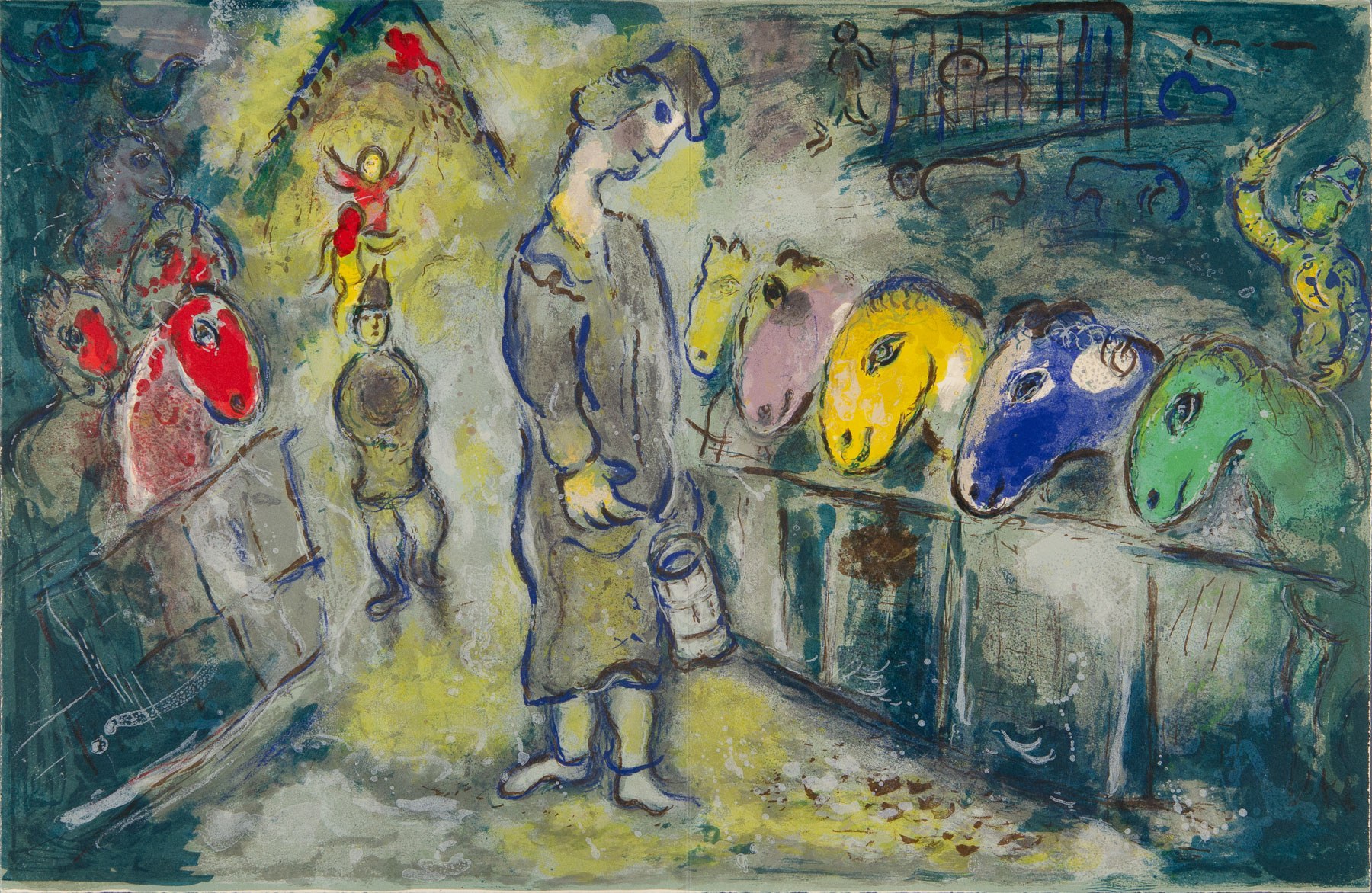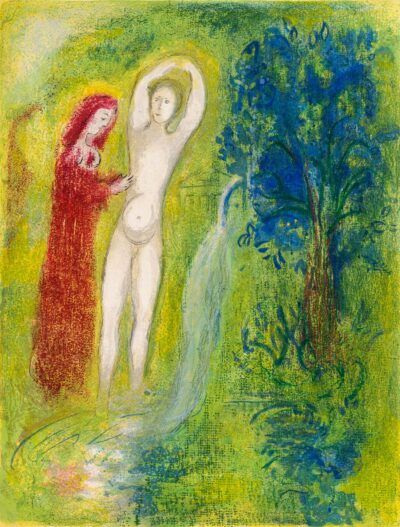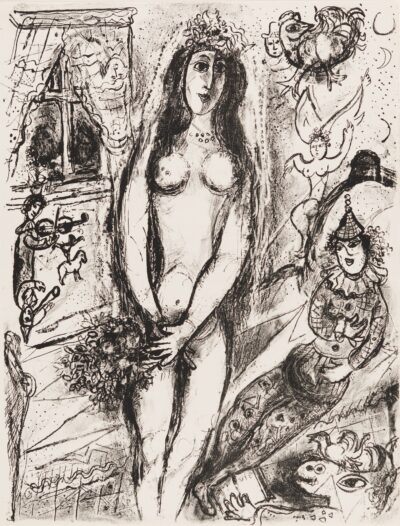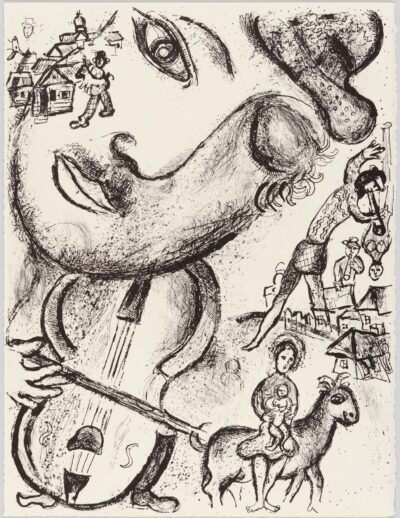Untitled from The Circus
Marc Chagall
Untitled from The Circus
lithograph
1967
An original Marc Chagall lithograph print.
1967
Original lithograph printed in colors on Arches wove paper.
A superb impression of the definitive state, from the album edition of 250 (there were 20 additional impressions reserved for the artist and his collaborators designated hors commerce, and a deluxe signed and numbered edition of 24). One of 38 original lithographs (23 in color, 15 in black & white) illustrating the album The Circus. Published by Efstratios Tériade, Editions Verve, Paris; printed by Atelier Fernand Mourlot, Paris.
Catalog: Mourlot 510
16 ¾ x 25 ½ inches
The idea of devoting a series of original lithographs to the subject of the circus stemmed from the publisher and art dealer Ambroise Vollard, for whom Chagall had already executed a number of book illustrations. Vollard was an impassioned circus-goer; he possessed his own box at the Cirque d’Hiver in Paris and often took his artist friends, including Chagall, there with him. In 1936 he commissioned Georges Rouault to produce a series of color aquatints on circus themes. Chagall executed preparatory gouaches for his circus series in the late 1920’s. After Vollard’s death in 1939, however, the project itself was not further pursued, although circus motifs frequently appeared in Chagall’s paintings and graphic works. It was the publisher Efstratios Tériade, with whom the artist had been on very close terms since the end of the 1940’s, who encouraged him to complete the cycle. Chagall thus resumed work on 6he circus series in 1962, using the already existing gouaches. The 38 lithographs comprising the finished album were published by Tériade in 1967. The accompanying texts were also composed by Chagall; thus the work is a livre d’artiste in the strict sense of the word, the mutually complimentary text and imagery having both been created by Chagall.
Like Vollard, Chagall loved the circus and, according to his assistant Charles Sorlier, often took childlike pleasure in it. However, it was a deeper level he sensed in the circus theme which intrigued him: “For me the circus is a magic spectacle which passes by like the affairs of the world and melts. There is an unsettling and a profound circus.” In his texts on the circus series, Chagall – who did not like to talk about his art – pointed out with uncustomary frankness that in his painting the subject was only the first impulse for the creative process, in the course of which the elements of reality, the circus as it is experienced, are subjected to thorough transformation:
Why are clowns, these trick riders and these acrobats present in my visions? And why do their make-up and their grimaces stimulate me? With them I approach other horizons. Their colors and make-up draw me towards other psychic deformations, which I dream of painting.




